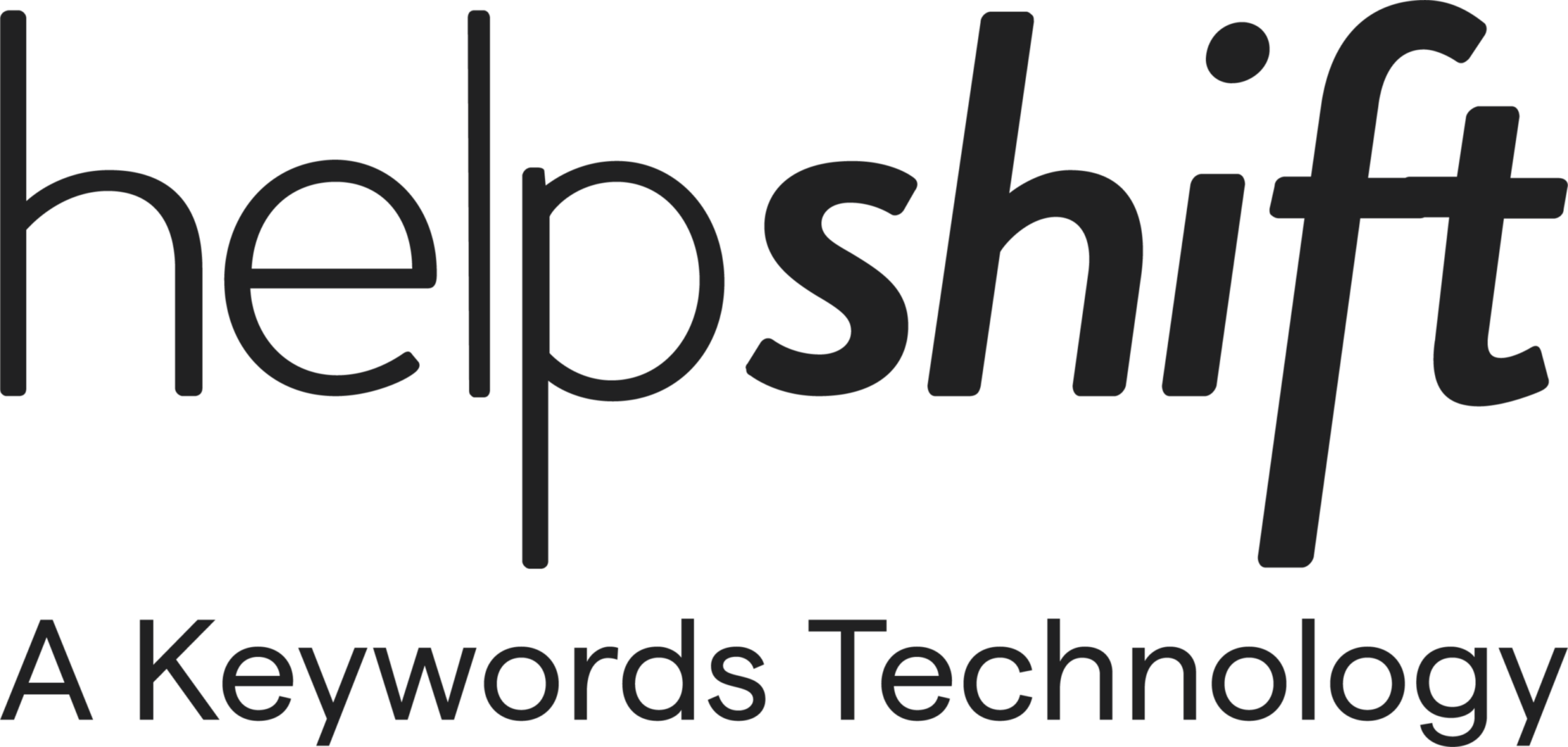New Technology in Customer Service

AI is ubiquitous in our lives — from bots, to real-time analytics, to natural language processing (NLP), to auto-classification — we use AI on a daily basis.
Now it’s time to bring those same technologies into customer service.
It’s An AI World, We’re Just Living In It
Think about what you’ve done today: did you check the weather? Ask Siri to call your mom? Read the news? Scroll through Facebook? Listen to Spotify playlists? Check your email? Watch Netflix?
If your answer is yes to any of the above, you’ve used AI today.
AI is all around us, so woven into the fabric of our lives that we don’t even realize it’s there.
From predictive algorithms (used for predicting the weather or suggesting Netflix shows), to NLP (used by Siri and various chatbots), to machine learning (used for Facebook feeds and Google search), AI has become so commonplace that most of us use it upwards of 10 times per day, without even noticing.
The reality is AI doesn’t only refer to sentient robots; it refers to intelligent machines that can learn, teach themselves, and process information in real-time.
And these machines are everywhere.
In most industries, AI has also been incorporated into enterprise solutions. For instance, Geico uses decision-tree bots with limited NLP to help users buy the right insurance for their needs — without ever interacting with a human.
DeepMind’s recent development of a retinal scan that can predict cardiovascular risk is a highly complex example of auto-classification. Netflix bought “House of Cards” without ever even seeing the pilot — the decision to invest in the show was based exclusively on predictive analytics that used data points including plot theme, viewership trends, director metrics, and the political climate.
AI is even used in logistics and delivery systems to allow organizations to schedule work orders based on resource availability, inventory, and timeline.
Despite this ubiquity, AI has been sorely lacking from customer service — and consumers have noticed.
The current state of customer satisfaction in the U.S. is abysmal: according to a recent Helpshift survey, 94 percent of customers “dread” contacting customer service!
Consumers have come to expect the same efficiency, speed, and accuracy that they receive from other AI-driven products in their customer service. They want instantaneous responses, accurate resolutions, and highly-efficient interactions.
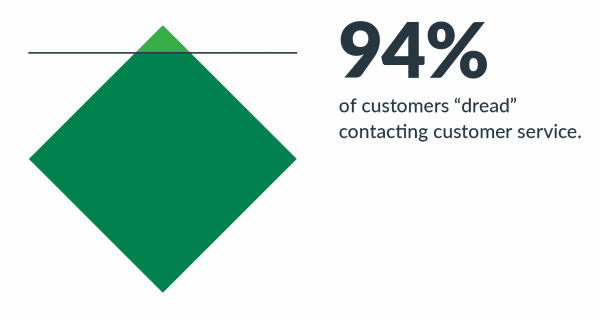
Why You Need a Solid Support Foundation
Before we dive into how to integrate AI into your customer service workflow, it’s important to note that this technology is predicated on a customer service strategy that is messaging-based. If your customer service is still based in an offshore call center, you have a lot of foundational work to do before you can start profiting from AI.
Additionally, you’ll need a fairly robust knowledge base in place before you introduce chatbots and auto-classification. AI-based customer service is not the first step to build out a competitive, 21st century workflow.
First, develop the prerequisites — chat-based service and a robust knowledge base — and then put the final touches on with AI-based customer support.
The First Step Towards Delivering Instantaneous Service
Helpshift Predict: Use Machine Learning for Auto-Classification
Helpshift’s Predict auto-classifies tickets and automates service workflows. Using AI-driven proprietary technology, it improves time-to-first-response, lowers overhead, and enables agents to focus on doing what they love best about their jobs: helping customers.
Predict uses two technologies to auto-triage tickets:
- Auto-classification
- Machine learning
When a ticket is submitted, Predict first puts the ticket into one of many classification ‘buckets’. It decides whether it is a shipping and delivery question, an account access question, a technical inquiry, an ad hoc issue, etc.
Predict is able to do this based on information it receives from a chatbot (more on that later). Using machine learning and keyword identification, it analyzes information from the conversation including username, description of the problem, device type, etc, and then auto-classifies tickets in real time.
Once the machine learning engine has had time to learn from an ever increasing corpus of data (which can take as little as 5 minutes), it auto-classifies with greater accuracy than human agents.
After the system has auto-classified the ticket, it either automatically routes it to the agent best equipped to efficiently solve the customer’s problem, or follows a pre-programmed action, such as invoking a chatbot or suggesting a knowledge base article to deflect the ticket.
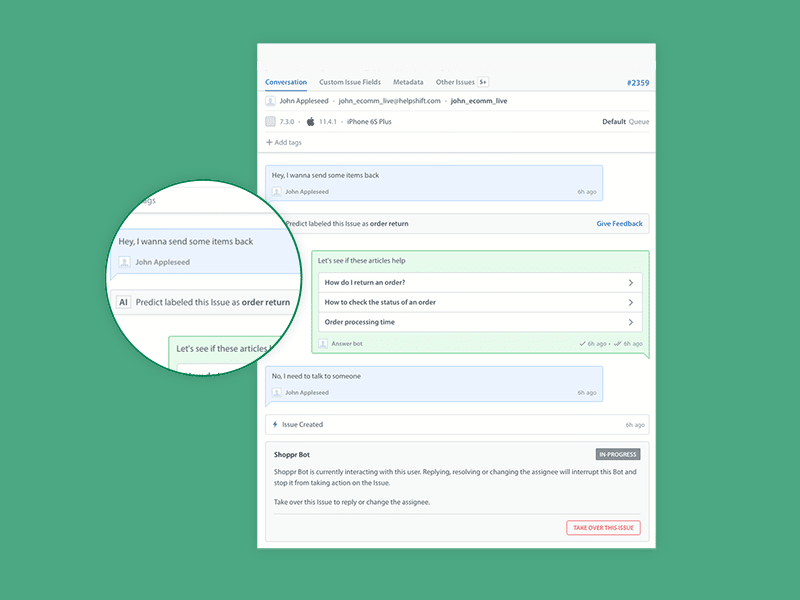
If an agent is needed, Predict routes the ticket based on factors including:
- Issue urgency
- Customer data
- Technical level
- Agent capacity
- Category/language
Unlike other automated customer service solutions, the routing algorithm goes beyond assignment based on specialty and seniority alone: it also takes into account agent and team backlog, and will automatically adjust to account for these factors.
Customer service managers can also set rules to ensure that no agent or team ever ends up with a backlog that results in a service level agreement (SLA) violation.
Additionally, because the machine ‘reads’ and interprets language at 10x the speed of a human, it can make decisions in a fraction of the time. This dramatically reduces error rate — such as forcing customers to be transferred between agents — while significantly reducing time to resolution.
One of the most significant benefits of Predict is that once it is set up with adequate data and tags, it will continuously learn so that no additional manual effort is required.
Deploy Conversational Bots that Consumers Love
Bots are commonly seen in industries ranging from travel, to hospitality, to insurance, to retail, to banking. You can even order food or get a weather report through a quick chat with a bot.
Today’s commercial bots are effective because they lead customers down predetermined paths. Instead of relying on Natural Language Processing (NLP), the vast majority of chatbots use decision-tree structures in which users choose from menu options and are led down a subsequent path (see the screenshot to the right from Amazon.com).
Some of these chatbots also have limited NLP, but the interaction is not dependent on high-levels of accuracy. The use of this type of bot minimizes the risk of inaccuracy and error from NLP, and also integrates with auto-classification and routing.
Customers are increasingly willing to interact with bots in these scenarios, particularly on mobile or tablet devices. A recent Helpshift survey found that 58 percent of consumers have positive feelings toward chatbots, and furthermore, 67 percent of consumers said they would welcome chatbots that significantly reduced the time it took to explain their problem to an agent.
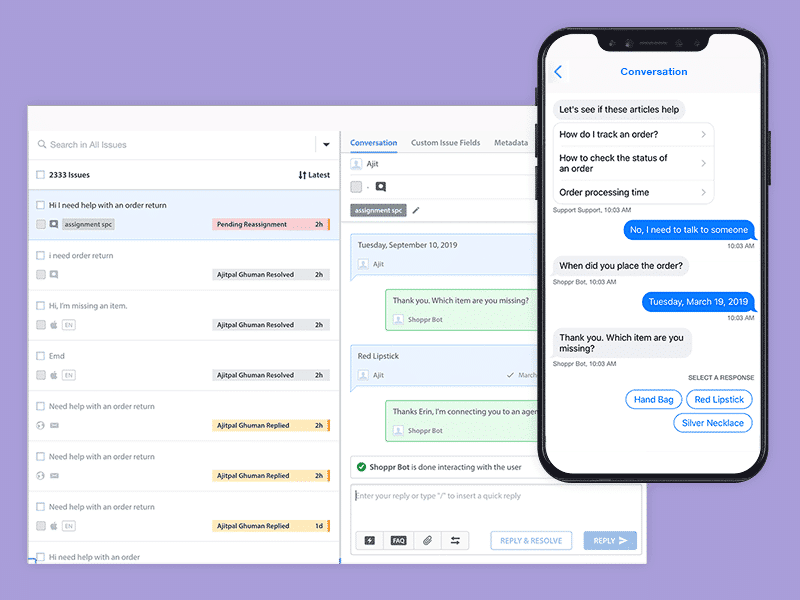
Helpshift Bots: Customer Service Bots That Actually Work
Helpshift Bots are foolproof: they don’t go rogue, they don’t rely on half-baked NLP, and most importantly, they simplify instead of over-complicate.
These built-in bots ship with five primary functions:
- Gathering Initial Ticket Information: This bot collects information about the type of issue (i.e., identifying whether it is a login question, a shipping issue, a payment problem, etc). This information then prompts either a guided-issue filing bot or AI-powered classification.
- Allowing Users to Select a Category: This bot provides a list of category options in a conversational “one-click” interface. Once the user selects an applicable category, the bot will then hand off the conversation to an agent or knowledge suggestion bot (below).
- Suggesting Knowledge Articles: This bot uses NLP to suggest relevant knowledge articles to customers — and deflects tickets in the process. If the knowledge article answers the user’s question, the ticket is effortlessly resolved. If the article is not adequate, the bot immediately hands off the issue to an agent to avoid any potential frustration.
- Requesting Additional User Information: This bot can further empower your agents by collecting information such as name, email, account number, and order number to verify accounts and expedite ticket resolution.
- Collecting Feedback: At the conclusion of an interaction, this bot asks customers to rate their experiences. By offering CSAT collection within the same chat window, there is an increased likelihood of response (as opposed to emailing, or even worse, calling back).
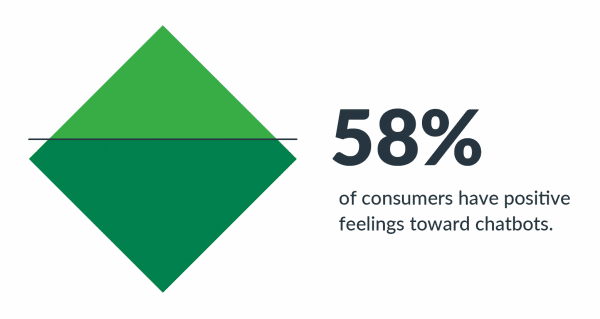
Helpshift Bots are built for conversational, native experiences. They guide users from one step to the next, and minimize time that agents spend either answering the same question over and over again, and/or collecting basic information.
Using these bots has immediate, tangible benefits including:
- Faster time to resolution
- Lower ticket volume
- Instant responses
- Unlimited scalability (bots can handle countless conversations simultaneously!)
- Happier customers
These benefits aren’t only on the consumer side, though — bots massively improve the agent experience too. Agents no longer need to waste time asking customers what device they’re on, what their order number is, or gathering any other routine information. Give your agents their time back, and allow them to do what they do best: solve problems.
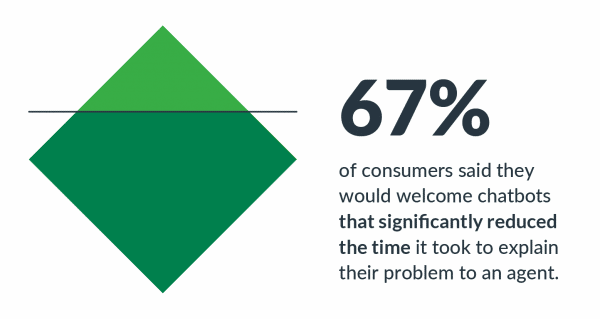
Custom Bots for Specific Use Cases
Helpshift also offers a custom bot-builder available for businesses that want to develop interactions specific to their use case. The bot-builder is simple and intuitive — meaning that no external contractors, data scientists or developers are necessary. For example, bot flows can be easily created to automatically resolve access issues without ever making it to an agent.That alone can decrease ticket backlog enormously.
Real-Time Insights to Track and Mitigate Emerging Issues
Customer service is a living, breathing entity. No matter how seamless your automated workflows are, there will always be emerging issues that require immediate action and the development of an entirely new workflow.
Helpshift Insights surfaces such emerging issues using technology that is similar to Twitter’s “trending” feature: a list of personalized, algorithmically-determined trending hashtags. To surface trending topics, Twitter’s algorithm polls tweets for repeated hashtags and calculates volume of those hashtags over a period of time.
Consumers only see hashtags that have sharp spikes, rather than sustained growth. This means that the algorithm only surfaces unusual trends — as opposed to picking out topics that are of general interest.
This same approach to “trending” analytics can be applied to customer service. An algorithm can poll tickets in real-time and surface unusual spikes in new requests. This is significantly different than traditional approaches to analytics, which give insights posthumously so that customer service managers can improve processes based on past patterns.
Instead, this allows CS supervisors to identify new and unusual behavior — and act on it — thereby giving customers superior care, and giving agents insight into holistic, real-time trends across the entire customer service department
Helpshift Insights: Completing the AI and Bots Based Circle
Helpshift Insights does just that and more. Taking a feature that consumers have been using for years on social media, Insights applies AI-powered ‘trending’ analytics to customer service in order to feed data back to Predict’s auto-classification functionality, which in turn creates new labels and corresponding automations. This completes the circle of customer service automation, freeing up agents and supervisors to focus entirely on providing the highest quality solutions as quickly as possible.
Imagine that you run a produce delivery service and one of your warehouse workers goes rogue. He starts replacing parcels with the wrong item — let’s say durian (a very smelly fruit). When recipients receive something other than what they ordered — especially something offensive like durian — where do they turn?
Customer service.
Suddenly, your company has an influx of similar problems that cannot be neatly placed into any pre-existing box, since this particular issue has never happened before. The team needs to move fast to make amends, and that’s where Helpshift Insights comes in.
A spike in requests related to durian is immediately identified as a deviation from the normalized ticket data. When Helpshift Insights surfaces a new trend like this, machine learning allows Insights to create a new category, or label, for durian-related issues. It hands off this new label to Predict, which proceeds to read conversations and label them as such without any input from human agents.
Predict then issues an automated workflow for informing victims of the durian stunt that the problem is being addressed, and instructing a bot to collect additional information. The bot then gathers the user and order information from the customer for a more personalized conversation. This rapid feedback loop ensures that emerging issues are dealt with as soon as possible and with the appropriate actions.
By the time the tenth person writes in about receiving “smelly fruit,” “durian,” or some other related verbiage, that person will receive an instant message stating that the issue is being addressed along with any relevant explanations or action items — all this instead of a flood of new tickets to a perplexed and flustered agent.
The real-time analytics tool makes automated triage more accurate in real-time, which in turn allows for relevant bot-based interactions. After a few iterations, the new ticket label is normalized — no longer an unusual “trending topic,” and Helpshift Insights can identify the next ad-hoc box of issues.
It offers a tight feedback loop so that agents and managers are always on top of emerging issues, and can offer the fastest and best care possible.
Conclusion
Give The People What They Want: Fixing The ‘Leaky Bucket’ Problem of Customer Service
Customers want the same caliber of service that they receive in every other digital interaction they have today. If they can buy insurance through a bot, why do they have to wait on the phone for four hours to get customer service assistance?
Likewise, agents want technology that enables the same frictionless interactions they experience outside of work to exist during their shifts. If they can see real-time trending topics on Twitter, why can’t they see real-time trending tickets?
Helpshift ensures that no ticket or customer falls through the cracks. Every single customer request receives an instant response with conversational bots, with minimal transfers due to auto-classification.
Agent time is likewise maximized with automatic classification and information collection, and every emerging issue is met with the same caliber of care that frequently asked questions are.
Bottom line: This tight-looped process gives customers the care they need, and agents the freedom to do their jobs successfully. By embracing the new world of customer service automation, you can access unprecedented levels of customer satisfaction and operational efficiency.
About Helpshift
Helpshift bridges the disconnect between conventional customer service channels — like email and phone support — and a growing consumer base that heavily relies on mobile devices and has a strong preference for messaging as the primary mode of communication. Through Helpshift’s AI-powered support platform, companies can resolve issues more efficiently, boosting customer satisfaction in the process. Companies such as Xfinity Home, Microsoft, Virgin Media, Zynga, Viacom, and hundreds of other leading brands use the Helpshift platform to provide messaging-first customer support.
Helpshift is installed on two billion devices worldwide and serves more than 130 million active consumers monthly. To learn more about Helpshift, visit helpshift.com and follow @helpshift on Twitter.
